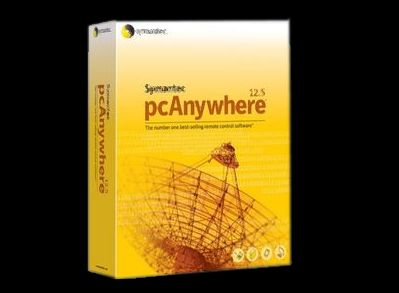Symantec PCAnywhere’s Limited Vulnerablity Called Into Question

An attack script has been posted online that can crash pcAnywhere as security researchers warn that old code can show current loopholes
Despite Symantec’s claims to the contrary, security researchers now believe that malicious developers could look at the leaked pcAnywhere source code and find vulnerabilities that can be exploited in current versions.
A researcher found that pcAnywhere’s source code was relatively unchanged from 10 years ago, according to an anonymous submission to the InfoSec Institute. Most changes to the code over the past few years were made to ensure the software keeps running on newer versions of Microsoft Windows, according to the InfoSec Institute post.
Cure for the common code
Analysis of the leaked source code and documentation available online contained information for pcAnywhere versions 9.2 through 12.0.2 and had a lot of information about what would be implemented in what is now the current version, 12.5. Source code for Symantec’s LiveUpdate tool, which is used to update all Symantec products on Windows, Mac OS X and Linux was also available, according to the analysis.
“A surprising amount of the core code originates from what is now 10 years ago with only a few added changes,” the researcher wrote.
Yamatough, an individual associated with an Indian hacker group, had claimed in early January to have obtained the source code for several Symantec products in a network breach that happened in 2006. Symantec finally admitted the 2006 versions of Norton Antivirus Corporate Edition, Norton Internet Security, Norton SystemWorks and pcAnywhere had been stolen. Symantec warned users to stop using pcAnywhere while it patched the software, and on Jan. 30, said it was safe to use the software again. After email negotiations collapsed between law enforcement agencies and Yamatough over a $50,000 (£31,660) potential payoff and destruction of the code, Yamatough released portions of the source code online.
Symantec had previously said the stolen source code for its security products did not pose any risks to any users because the code base had changed in the past few years. That appears to not have been the case for pcAnywhere as there does not appear to have ever been a plan for the complete rewrite of the source code, according to the InfoSec Institute post.
“12.5 is simply a continuation of this same code base,” the researcher wrote, adding, “Any exploits in the code are now visible by all.”
With the code released and readily accessible, “the sky is the limit” for malicious developers, the researcher wrote. The “juicy details of the pcAnywhere product as well as accompanying source code for all related components” are now readily available, making pcAnywhere “pcEverywhere”, according to the post.
Considering the high amount of reused code in pcAnywhere, the software is highly vulnerable because attackers can now detect flaws in the code that can be exploited, the researcher wrote.
One patch or many
Despite the age of the software, PCAnywhere is still used on at least 150,000 to 200,000 systems connected to the Internet, according to a recent survey by Rapid7. The security company’s survey was conducted to determine how prevalent the service was after Symantec warned the software should be disabled until it could be patched. About 2.5 percent of those systems appeared to be point of sales systems such as cash registers and other payment processing systems, according to Rapid7.
Companies that process credit cards and other e-commerce retailers appear to be most vulnerable to attackers looking at PCAnywhere exploits, said HD Moore, CSO of Rapid7. In fact, several POS vendors still recommend their customers install PCAnywhere for remote access, Moore said.
A potential pcAnywhere exploit was released on text-sharing site Pastebin by Johnathan Norman, director of security research at Alert Logic. The Python code, PCAnywhere Nuke, can be used to create a denial-of-service attack condition by crashing one of the remote access program’s services. The exploit is successfully against the most recent, fully patched version of PCAnywhere, version 12.5 build 463, and earlier versions, said Norman.
Nuke limitations
At the moment, pcAnywhere Nuke is a limited exploit because an attacker would have to run the script every two minutes to keep up the attack, according to Moore. It also is not clear at this point if the exploit is just crashing the service or if it is exploiting a bigger vulnerability that can be used to compromise the system running the software, said Moore.
The InfoSec analysis also claimed Symantec had developed an installer that installs newer versions of pcAnywhere in silent mode. It could be possible to use the code to make a modified version of pcAnywhere which users could be tricked into downloading. Once downloaded, it would act as a back-door application for researchers to use to compromise the system, said Moore.
It is important to realise that remote control applications such as PCAnywhere were already a prime target for attackers trying to break into networks, Joel Bomgar, CEO of Bomgar, wrote on the company blog Jan. 26. Verizon specifically called out PCAnywhere in its 2011 Data Breach Investigations Report as being one of the products used to compromise systems.
Symantec did not respond to eWEEK‘s requests for comments.
